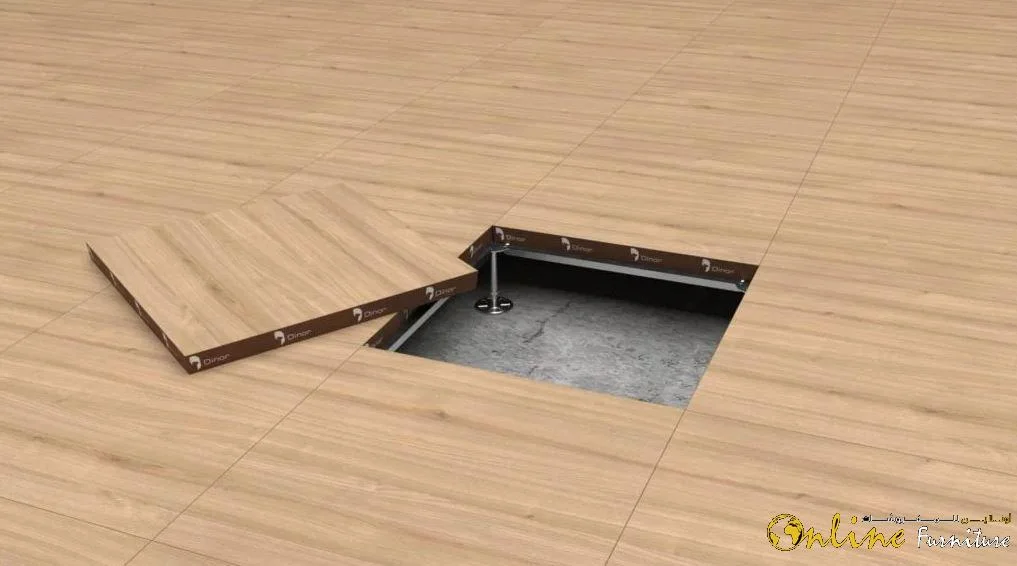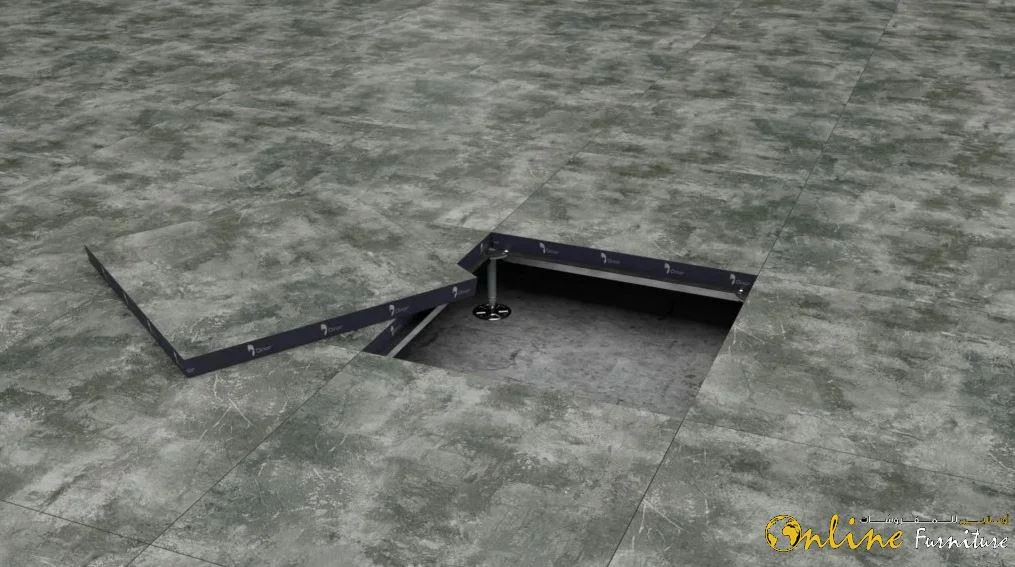Home / raised flooring
RAISED FLOORING
Raised flooring is a type of flooring system that is elevated off the ground by a series of support pedestals or understructure. It is typically used in commercial and industrial settings, such as data centers, computer rooms, server rooms, and control rooms.
The basic components of a raised flooring system include

- Floor panels: The top surface of a raised flooring system is made up of removable floor panels, typically made from materials such as steel, aluminum, or composite materials.
- Support pedestals: The floor panels are supported by a series of adjustable pedestals, typically made from steel or aluminum, which allow the height of the floor to be adjusted to accommodate different needs.
- Stringers: Stringers are horizontal supports that connect the pedestals and provide additional stability to the raised floor.
- Airflow management components: Raised flooring systems are often used in environments that require precise temperature and humidity control, and may include components such as airflow baffles, grilles, and diffusers to manage air circulation.
BUY RAISED FLOORING NOW
Finally, the future of raised flooring is likely to be shaped by the need for flexible and adaptable building designs. As the pace of technological change accelerates, businesses and organizations will need to be able to quickly and easily modify their building infrastructure to accommodate new technologies and changing needs.
Raised flooring systems can provide the flexibility and adaptability needed to meet these challenges, allowing for easy reconfiguration and modification to accommodate changing needs.
Overall, the future of raised flooring is likely to be driven by a combination of sustainability, technology, and flexibility, with a focus on creating adaptable, efficient, and environmentally friendly building solutions.

RAISED FLOORING OFFERS SEVERAL ADVANTAGES OVER TRADITIONAL FLOORING SYSTEMS

- Accessibility: Raised flooring allows for easy access to the space below the floor, making it ideal for running cables, pipes, and other infrastructure.
- Flexibility: Raised flooring systems can be easily reconfigured or modified to accommodate changes in technology or equipment.
- Airflow management: Raised flooring can be designed to support precise temperature and humidity control, making it ideal for environments such as data centers or laboratories.
- Noise reduction: Raised flooring can help to reduce noise levels by providing a barrier between the floor and the space below.
- Aesthetics: Raised flooring can be customized to match the design and style of a building, with a range of finishes and colors available.
Overall, raised flooring is a versatile and effective flooring system that offers a range of benefits for commercial and industrial settings, providing accessibility, flexibility, airflow management, noise reduction, and aesthetic appeal.
TRENDS RELATED TO RAISED FLOORING
The future of raised flooring is likely to be driven by several key trends and factors, including the growing demand for sustainable and energy-efficient building solutions, the increasing use of technology in commercial and industrial settings, and the need for flexible and adaptable building designs.
One of the key trends in the future of raised flooring is likely to be a focus on sustainability and energy efficiency. As buildings become more energy-efficient and environmentally friendly, raised flooring systems will need to adapt to meet these changing needs. This could include the use of renewable materials, such as bamboo or recycled plastics, and the integration of energy-efficient lighting and heating systems into the raised flooring design.
Another trend is the increasing use of technology in commercial and industrial settings, such as the rise of the Internet of Things (IoT) and the growing demand for data centers and server rooms. Raised flooring systems will need to be designed to accommodate these technological advancements, with features such as integrated wiring and cabling, cooling and ventilation systems, and advanced air filtration systems.
FAQ'S
A: Raised flooring is a type of flooring system that is elevated above the subfloor, creating a space between the two levels. This space allows for the installation of various types of systems such as electrical, mechanical, and data cabling.
A: Raised flooring offers several benefits including improved airflow, easy access to systems for maintenance and upgrades, improved aesthetics, and increased flexibility in floor plan layouts.
A: Raised flooring is ideal for buildings that require a high level of flexibility in their layout and infrastructure, such as offices, data centers, and server rooms.
A: There are several types of raised flooring systems available including stringer-based systems, panel-based systems, and bolted systems. The choice of system will depend on several factors such as the load capacity, type of installation, and budget.
A: The weight capacity of a raised floor will depend on several factors such as the type of system, the size of the panel, and the material used. It is important to consult with a professional to determine the weight capacity of a raised floor for a specific application.
A: Raised flooring is typically installed by a professional team who will prepare the subfloor, lay out the support structure, and install the flooring panels. The installation process will vary depending on the type of system being used.
A: Yes, raised flooring can be customized to fit specific design requirements. There are a variety of finishes, colors, and materials available to choose from, allowing for a high degree of customization.
A: The cost of raised flooring will depend on several factors such as the type of system, the size of the area, and the level of customization required. It is recommended to get a quote from a professional raised flooring service to determine the exact cost.






